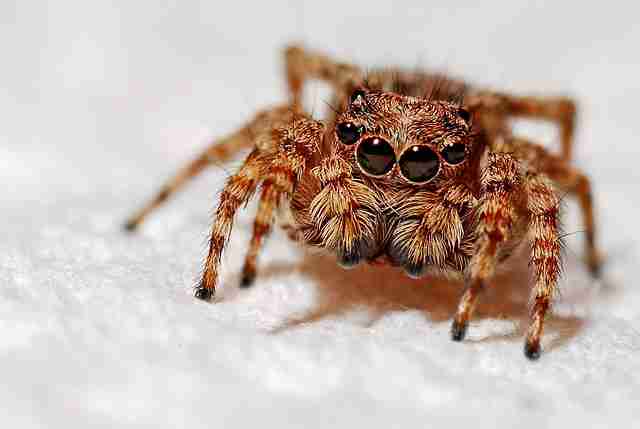Do Giraffes Make Noise? (Explained)
Giraffes are very easy to recognize. Their long necks, tall longs (which are taller than most humans), and friendly faces make them easily likeable. I doubt there’s anyone who doesn’t find them adorable.
But, are they as silent as they seem? Do giraffes make noise?
Today, we will explore everything you need to know about giraffe vocalization.

Do Giraffes Make Noise?
Yes, giraffes make noise but not as humans or most animals. Their sounds are usually beyond human hearing, and that is because of their vocal anatomy.
Like mammals, giraffes have a structure known as the larynx or voice box. This is where you will find the vocal cords. The vibration of the vocal cords when air passes through the lungs produces different sounds.
Unfortunately, because they have such long lungs, the giraffes’ larynx is located quite a distance away from the mouth.
The long distance between the larynx and the mouth, combined with having a windpipe (trachea) that’s proportionately longer than other mammals, might be responsible for the inaudibleness of some giraffe sounds and how we perceive them.
Types of Giraffe Noises
Here are various sounds giraffes make:
Humming
The low-frequency humming sound that giraffes make is believed to be a form of communication between individuals, particularly during nighttime.
The humming, which is often described as similar to a swarm of bees or a distant freight train, falls within the frequency range of about 92-98 Hz, which is lower than what humans can hear without any aid.
Scientists believe that the humming could be a form of ‘contact call’ – a way for giraffes to keep in touch with each other in the dark when their visual communication signals are not as effective.
Snorts and Grunts
Giraffes make audible snorts, grunts, and hisses, typically when they are alarmed or threatened.
These sounds are made by forcefully expelling air through the nostrils or mouth. They are typically made during the day to alert other members of the group of potential threats or when individuals are in distress.
The snorts are usually brief and explosive, alerting other giraffes of potential danger. The grunts, on the other hand, are deeper and may signal displeasure or anxiety.
Coughing
The giraffe “cough” is a unique way mothers use to call their calves.
The noise is not a true cough – it’s more of a low, short, repetitive sound that the mother giraffe makes, and which the calf learns to recognize. It is also believed that the males make loud coughs during courtship.
Infrasound
Studies also suggest that giraffes also use infrasound to communicate, which is usually below frequencies of 20 Hz, and inaudible to humans. This is similar to elephants.
Although this theory is still under investigation, if giraffes do use infrasound, it would make sense given their large size and the vast distances over which they need to communicate.
Body Language
Giraffes also use body movements and postures to express their intentions or feelings. For instance, necking — a common behavior where two males swing their necks at each other — is common during conflicts or disputes. This display can be very violent and is often used to assert dominance.
Why Do Giraffes Make Noise?
- Survival: Many of the sounds giraffes make are for survival. These can be hisses and snorts, which are also used to alert others of potential danger, especially when predators like lions or hyenas are nearby.
- Social Interaction: Some sounds serve to strengthen social bonds. For instance, the humming sound at night is used by the giraffes to stay connected.
- For courtship: The coughing made by males is believed to be a part of their courtship ritual, attracting females and expressing their interest in mating.
- To locate calves: Mothers and calves also communicate through sound. The bellows and moos of a mother giraffe may help her locate her calf in a herd.
Do Giraffes Have Vocal Cords?
Yes, giraffes have vocal cords or, more accurately, vocal folds.
The cords are structured and function a bit differently due to the length of a giraffe’s neck. The sounds produced or usually harder to detect or differentiate for humans.
Why Are Giraffes Generally Quiet?
Although giraffes do make some noises, they are generally quiet animals. And this can be linked to their long necks and need to avoid predators.
Giraffes have extremely long necks, which makes it challenging for them to produce loud vocalizations. Sound travels more slowly through their long vocal tract.
Also, they use silence as a way to evade predators.
Which Animal Has No Voice Sound?
There are many animals that do not produce vocal sounds. Examples are snails, earthworms, starfish, fish, jellyfish, ants, slugs, and snails. These animals don’t have vocal cords.
Conclusion: Do Giraffes Make Noise?
While giraffes are often perceived as quiet animals, they do make noise. They communicate through various means:
- Humming: A low-frequency humming sound, typically made during the night. This humming is too low-pitched for humans to hear unaided.
- Snorts and Grunts: Giraffes make audible snorts, grunts, and hisses, usually when they are alarmed or threatened.
- Coughing: The giraffe “cough” is a unique noise that mothers make to call their calves.
- Infrasound: A low-frequency noise below the human range of hearing, similar to elephants.
These sounds might not be as loud or apparent as other animals.
When you think about it, giraffes are prey animals. So, it’s beneficial for giraffes to stay quiet to avoid attracting potential predators.





